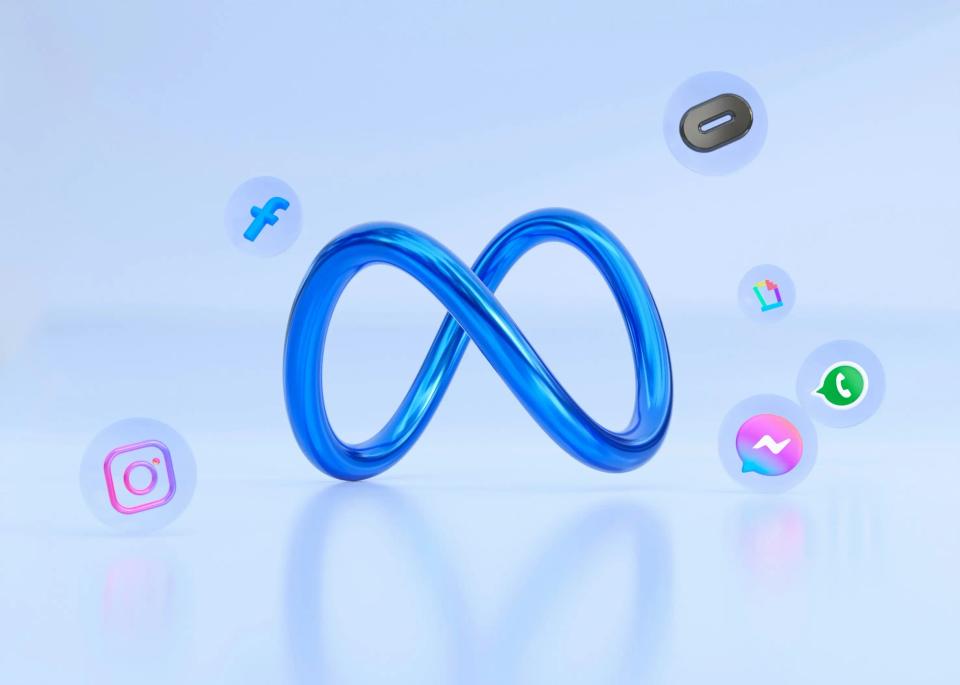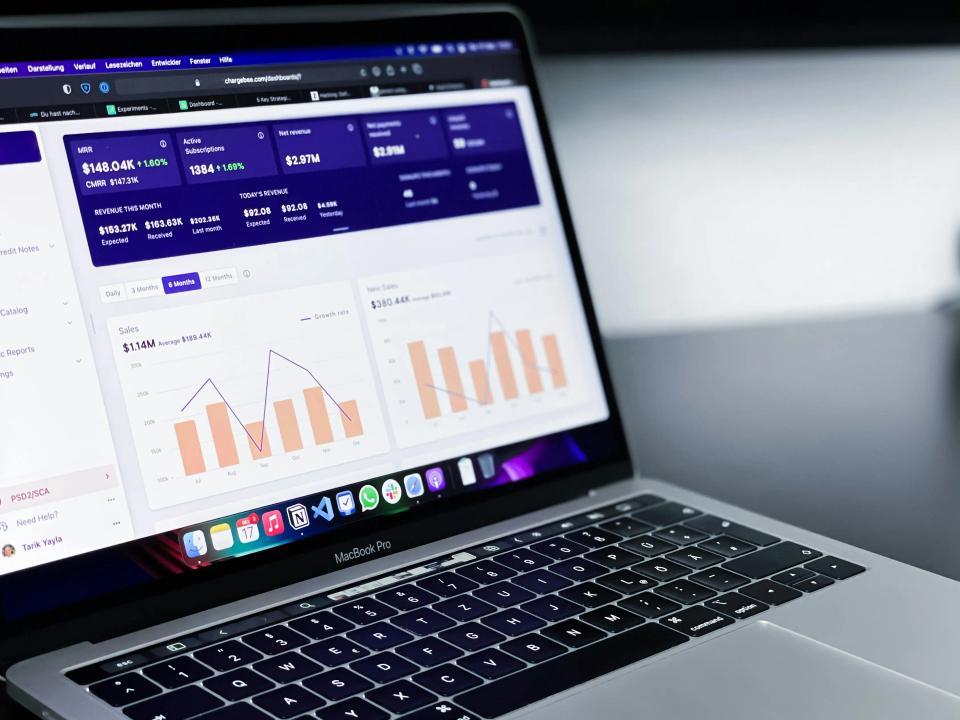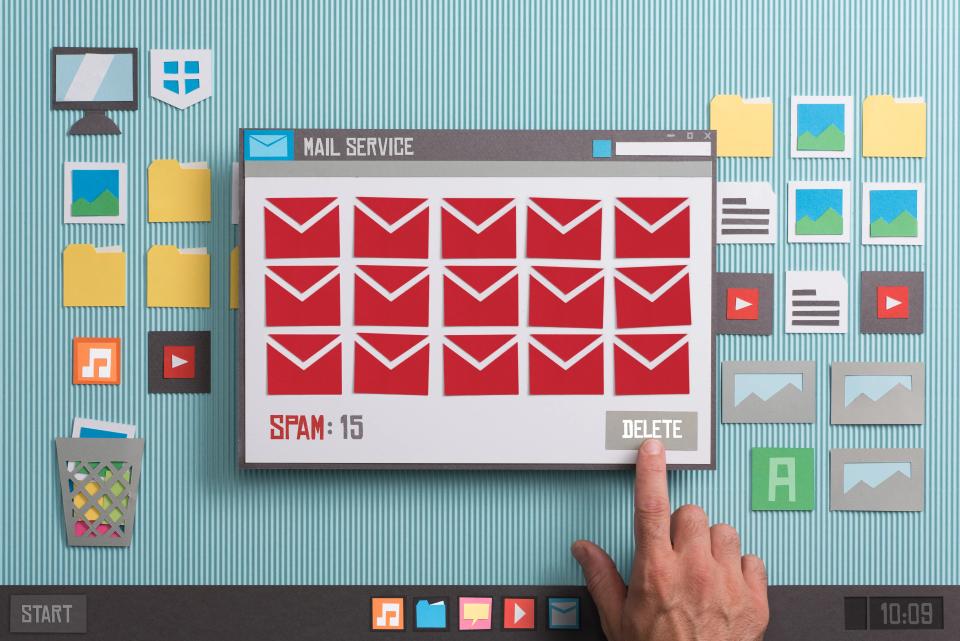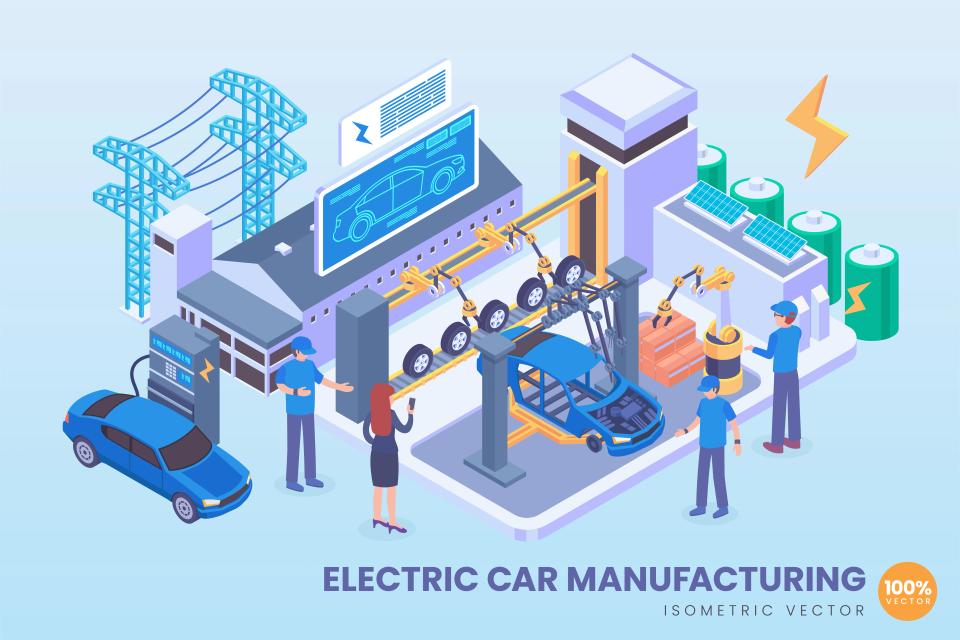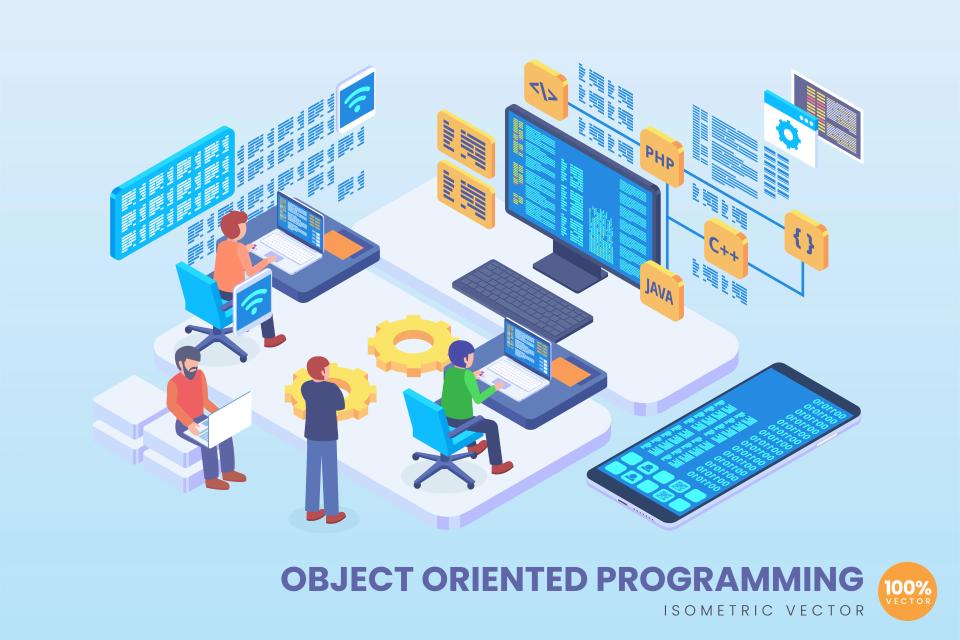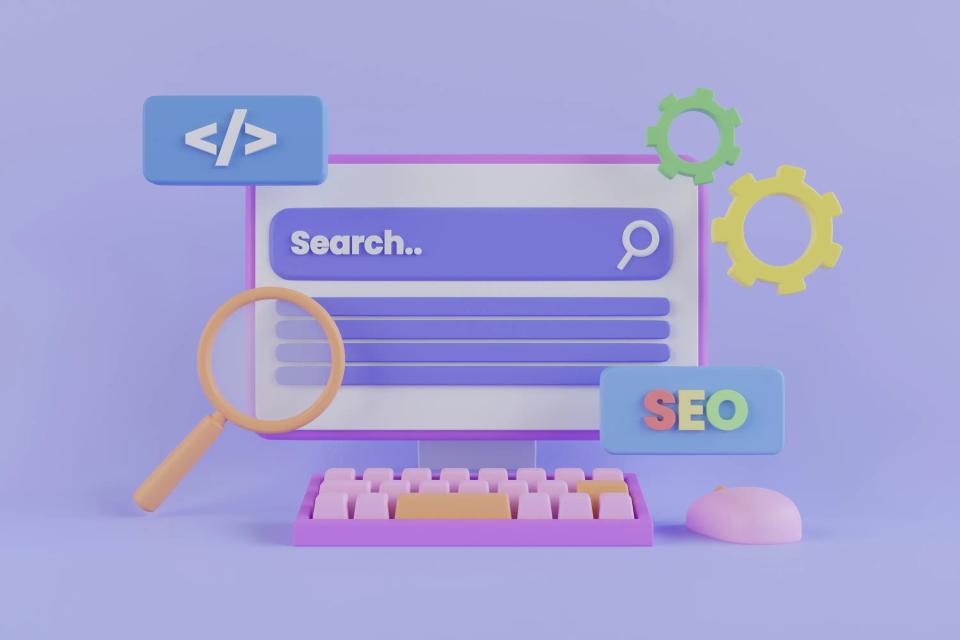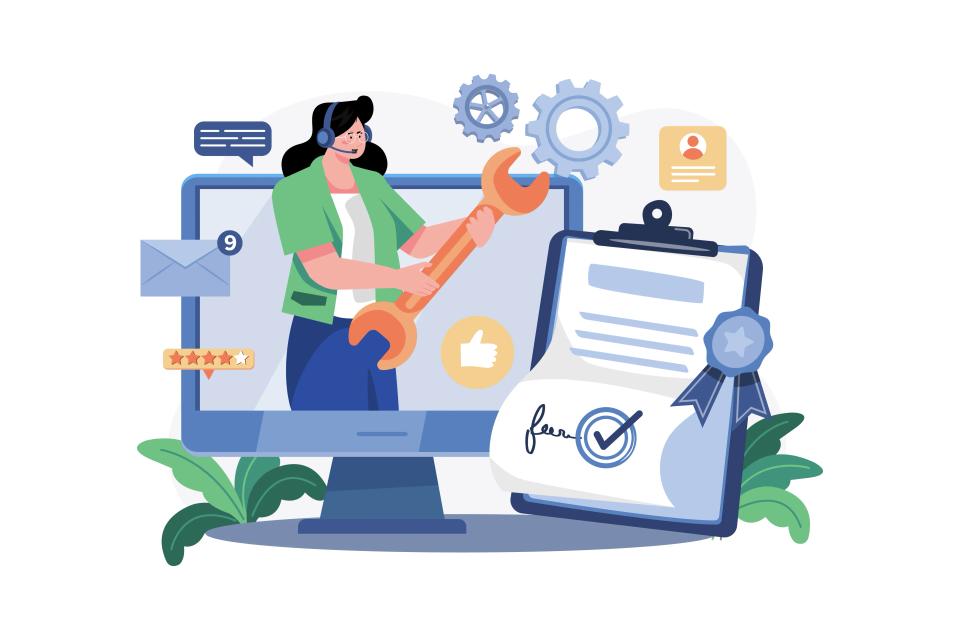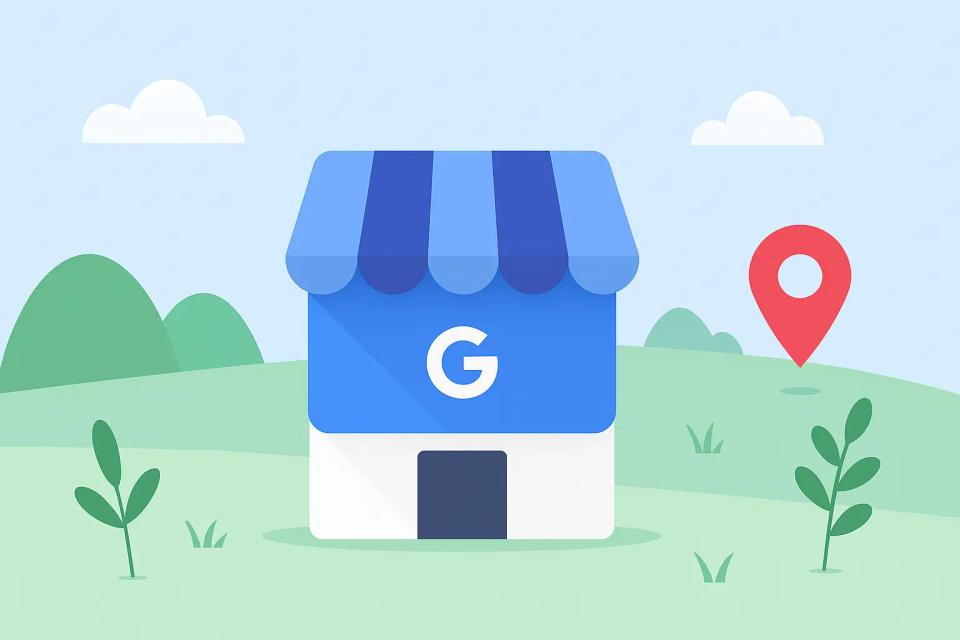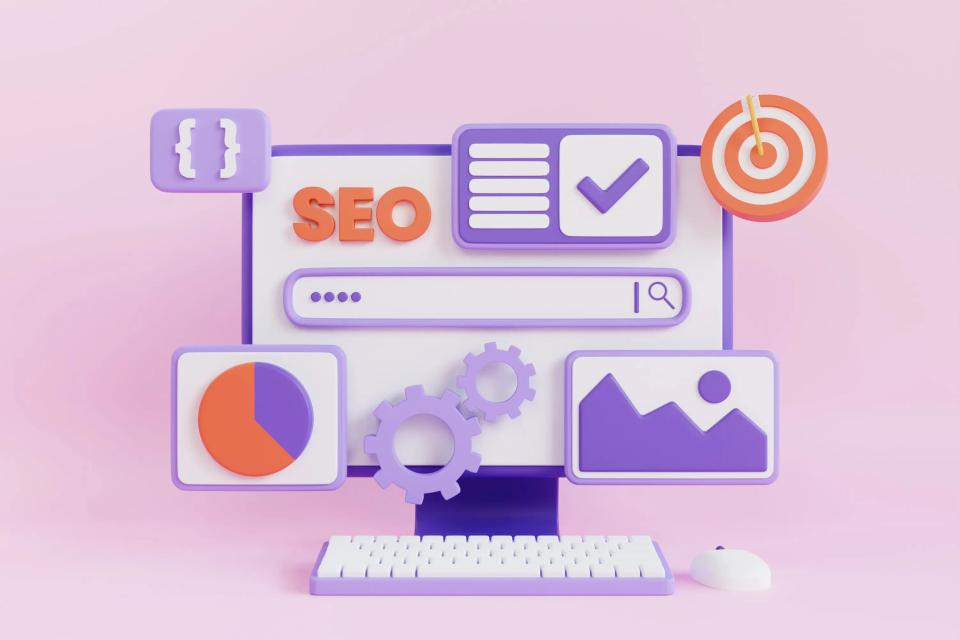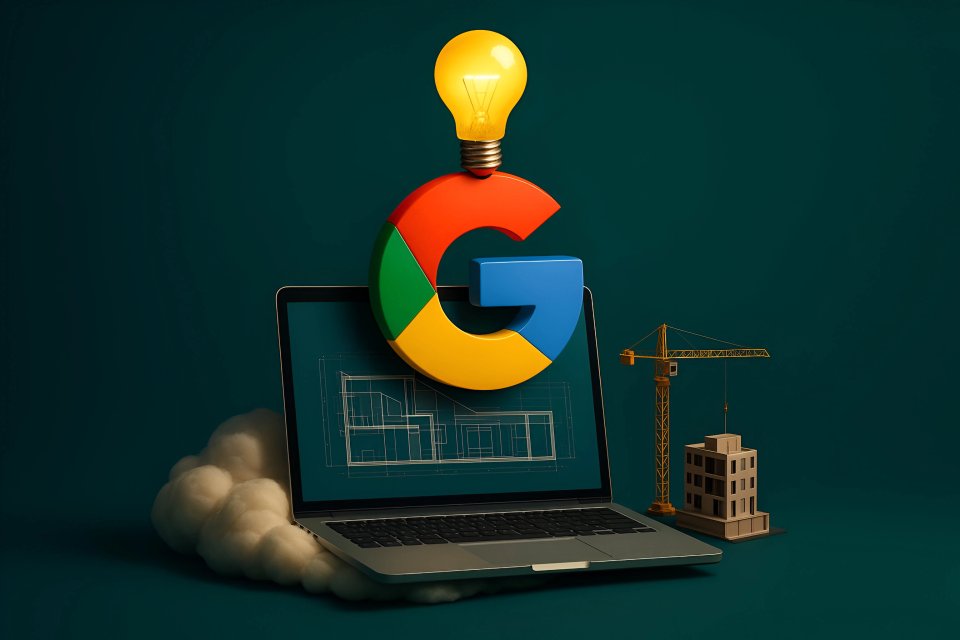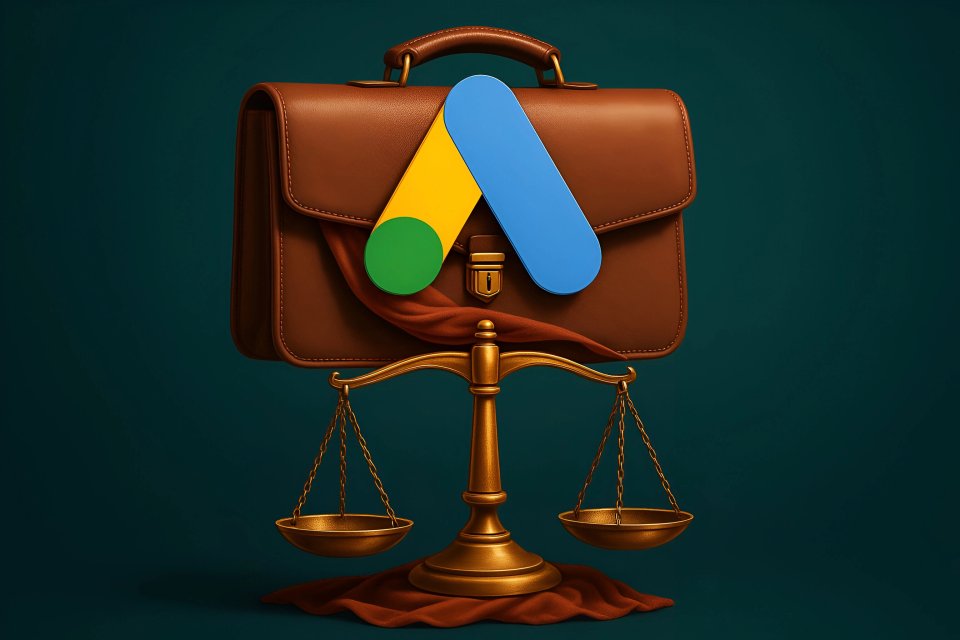The digital marketplace is booming, a modern-day gold rush. But with opportunity comes fierce competition. Are you tired of shouting into the void, your amazing products lost in the online noise? You need a secret weapon, a direct line to customers hungry for what you sell.
Enter Google Ads. This isn't just another advertising platform; it's a powerhouse of intent-driven marketing, connecting you with shoppers at the very moment they're ready to buy. Imagine tapping into a river of customers actively searching for your solutions. That's the Google Ads advantage, and it's within your grasp.
This guide is your treasure map. We'll unveil actionable strategies to transform your Google Ads from a cost center into a profit-generating machine. We'll cover everything from foundational campaign setup, laser-focused keyword strategies, irresistible ad copy, meticulous tracking, to relentless optimization. At CaptivateClick, we live and breathe strategic marketing campaigns that don't just make noise – they deliver tangible results, and we're here to show you how.
Why Google Ads is Non-Negotiable for E-commerce Success
Still wondering if Google Ads is worth your precious time and budget? Let me be blunt: for e-commerce, it's not just an option, it's a lifeline. You're leaving money on the table, handing sales to your competitors, if you're not leveraging its power.
Targeting High-Intent Shoppers
Google Ads puts you directly in front of people actively searching for products like yours. Think about it: someone types "buy organic dark roast coffee beans" into Google. That’s not casual browsing; that’s a buyer with their wallet out! Shopify highlights that Google Ads target users based on their search queries, meaning you reach customers with clear purchase intent, unlike passive scrolling on social media. This direct line to motivated buyers is pure gold for e-commerce.
These aren't just any shoppers; they are high-intent individuals signaling exactly what they want. You get to be the immediate answer to their needs, the solution to their desires. This precision targeting means less wasted ad spend and a much higher likelihood of conversion, boosting your security and market dominance.
Measurable ROI
Tired of marketing efforts that feel like throwing spaghetti at the wall? Google Ads offers crystal-clear, measurable Return on Investment (ROI). You can track every dollar spent and every sale generated, as Saras Analytics emphasizes the importance of tracking KPIs like ROAS and CPA for e-commerce success. This transparency means you know exactly what’s working and what’s not.
Imagine knowing, with certainty, that for every $1 you invest, you get $4, $5, or even $10 back. This isn't a fantasy; it's the reality for well-optimized Google Ads campaigns. This data-driven approach allows you to make smart decisions, cut losses quickly, and double down on what fills your bank account.
Scalability
As your e-commerce empire grows, your Google Ads campaigns can scale right alongside it. Start small, test the waters, and as you find winning formulas, you can increase your budget and reach. There's no ceiling to your potential growth.
Whether you're a plucky startup or an established brand looking to expand, Google Ads adapts to your ambitions. This scalability ensures that your advertising efforts can match your business's trajectory, helping you dominate your niche and secure a larger market share. According to Coursera's insights on Google Ads budget management, this flexibility is crucial for businesses aiming for growth.
Diverse Ad Formats
Google Ads isn't a one-trick pony. It offers a rich tapestry of ad formats, from compelling text ads in search results to visually stunning Shopping ads that showcase your products directly. You can even captivate audiences with YouTube video ads or re-engage past visitors with Display ads.
This variety means you can tailor your approach to different stages of the customer journey and different product types. As Shopify points out, different Google Ad types like Shopping and Video ads serve distinct purposes in an e-commerce strategy. This ensures you’re always presenting your products in the most appealing and effective way, maximizing your chances of a sale.
Laying the Foundation: Pre-Campaign Essentials for E-commerce
Before you even think about launching your first Google Ad, hold your horses! Rushing in without a solid foundation is like building a skyscraper on quicksand. You need to prepare the ground, ensuring every click you pay for has the best possible chance of turning into a sale.
Defining Clear E-commerce Goals & KPIs
What do you really want to achieve? More traffic? Sure, that’s nice. But e-commerce thrives on sales, profit, and growth. You need to look beyond vanity metrics like clicks and impressions. Focus on what truly matters: Conversions, Return on Ad Spend (ROAS), Cost Per Acquisition (CPA), and Average Order Value (AOV).
Setting clear, measurable goals is paramount. For instance, aim to achieve a 400% ROAS or reduce your CPA by 15% within the next quarter. Saras Analytics stresses that defining these e-commerce KPIs is fundamental to measuring success and making informed decisions. Without these targets, you're just sailing blind.
These goals become your North Star, guiding every decision you make in your campaigns. They provide clarity and purpose, transforming your advertising from a hopeful gamble into a strategic investment. This focus on tangible outcomes is what separates thriving e-commerce businesses from the ones that merely survive.
Optimizing Your E-commerce Website for Conversions
You can drive all the traffic in the world to your website, but if it’s a confusing, slow, or untrustworthy mess, those potential customers will vanish faster than a free sample. Your website must be a conversion machine. This means a stellar User Experience (UX), intuitive navigation, and lightning-fast loading speed. According to Tidio, a mere 1-second delay in page response can result in a 7% reduction in conversions.
Your product pages need to sing. High-quality images, compelling descriptions that tap into emotion, and a streamlined checkout process are non-negotiable. At CaptivateClick, we understand that innovative e-commerce web design trends that drive sales are crucial for turning ad clicks into loyal customers. Don't let a poor website experience sabotage your Google Ads investment.
Think about it: a customer clicks your ad, excited by your offer, only to land on a page that’s slow to load or hard to navigate. Frustration sets in, and they click away – straight to your competitor. Optimizing your site for conversions is about respecting your visitors' time and making it incredibly easy for them to say "YES!" to your products.
Setting Up Google Analytics & Google Merchant Center
Data is your most powerful ally in the Google Ads battle. Without accurate tracking, you're fighting blindfolded. Ensure your Google Analytics 4 (GA4) is correctly set up with e-commerce tracking enabled. This allows you to see exactly how users interact with your site after clicking an ad, as detailed by Loves Data on e-commerce tracking in Google Analytics.
Equally crucial for e-commerce is the Google Merchant Center (GMC). This is where your product feed lives, powering your Shopping ads. A well-optimized GMC feed, with accurate product titles, descriptions, prices, and high-quality images, is essential for visibility and performance. Groove Commerce provides excellent guidance on optimizing your Google Merchant Center feed for success.
Proper setup of these tools ensures that the rich data from your campaigns flows seamlessly, allowing you to make informed decisions. You'll understand which campaigns drive actual sales, not just clicks, and which products are your true champions. This knowledge is the bedrock of maximizing your ROI.
Choosing the Right Google Ads Campaign Types for E-commerce
Google Ads offers a diverse arsenal of campaign types, each with unique strengths. Choosing the right ones for your e-commerce business is like selecting the perfect tools for a master craftsman. Get this right, and you'll build a sales-generating machine.
Search Campaigns
Search Campaigns are your bread and butter for capturing high-intent shoppers. When someone types a specific product name, like “men's waterproof hiking boots size 10”, or even your brand name into Google, your ad can be right there, offering the perfect solution. You can even strategically target competitor terms, though tread carefully and ethically.
These campaigns allow you to connect with customers at the precise moment they're expressing a need. The beauty of Search Campaigns lies in their ability to target users based on the exact keywords they use, ensuring high relevance. This precision means your ad spend is focused on individuals already deep in the buying cycle.
The power here is undeniable: you're not interrupting; you're providing an immediate answer. This alignment with user intent often leads to higher conversion rates and a better return on your investment. It’s about being present and helpful, securing that sale when desire is at its peak.
Shopping Campaigns (Standard & Smart Shopping - transitioning to Performance Max)
For e-commerce, Shopping Campaigns are often the visual cornerstone of Google Ads success. These aren't just text ads; they are Product Listing Ads (PLAs) that showcase your product image, title, price, and store name directly in the search results. Imagine your product, beautifully displayed, right when a customer is looking for it!
These visually appealing ads are incredibly effective because they give shoppers key information at a glance, helping them make quicker buying decisions. As Shopify explains, Shopping ads are highly effective for e-commerce because they present products in an engaging, informative format. While Smart Shopping is transitioning, the principles of a strong product feed and visual appeal remain critical within Performance Max.
The directness of Shopping ads often leads to higher click-through rates and conversion rates compared to text-only ads for product queries. They reduce friction, allowing customers to see what they're getting and how much it costs before they even click. This transparency builds trust and attracts more qualified, ready-to-buy leads.
Performance Max Campaigns
Performance Max (PMax) is Google's AI-driven campaign type, designed to help you reach customers across all of Google's channels from a single campaign. This includes Search, Display, YouTube, Discover, Gmail, and Maps. You provide high-quality assets (text, images, videos) and audience signals, and Google's machine learning does the heavy lifting to find converting customers.
The key to success with PMax is feeding the AI with top-notch creative assets and relevant audience signals, such as your customer lists or website visitor data. According to insights from Analyzify on Performance Max audience signals, providing strong signals helps Google's AI find your ideal customers more efficiently. This allows you to tap into new customer segments you might not have discovered otherwise.
While it requires relinquishing some manual control, the potential reach and efficiency of PMax can be immense, especially for e-commerce businesses looking to scale. It’s about leveraging Google's powerful AI to work smarter, not just harder, to achieve your sales goals. For a deeper dive into automation, consider exploring top AI tools and automation techniques for digital marketing success.
Display Remarketing Campaigns
What about those visitors who came to your site, browsed, maybe even added items to their cart, but then left without buying? Don't let them get away! Display Remarketing campaigns allow you to re-engage these valuable prospects by showing them targeted ads as they browse other websites in the Google Display Network.
This is your chance to remind them of what they were interested in, perhaps offer a small incentive like free shipping or a discount to seal the deal. Retargeted visitors are significantly more likely to convert because they've already shown interest in your brand. LeadsBridge highlights how Customer Match, a form of remarketing, can be highly effective.
These campaigns are crucial for plugging leaks in your sales funnel and maximizing the value of every visitor. It’s about staying top-of-mind and gently nudging those "almost customers" over the finish line, turning missed opportunities into secured sales and fostering customer loyalty.
YouTube Ads (for relevant products)
Don't underestimate the power of video. For certain e-commerce products, YouTube Ads can be a game-changer. Think product demonstrations, unboxing videos, customer testimonials, or compelling brand storytelling that evokes emotion and desire.
Video allows you to connect with potential customers on a deeper level, showcasing your products in action and building brand personality. As Shopify notes, YouTube ads can be powerful for brand building and product showcases. If a picture is worth a thousand words, a well-crafted video ad can be worth a thousand sales.
While not suitable for every product, for those that benefit from visual demonstration or emotional connection, YouTube Ads offer a unique opportunity to captivate and convert. It’s about engaging multiple senses and creating a memorable experience that drives viewers to your store, eager to learn more and make a purchase.
Strategic Keyword Research for E-commerce Products
Keywords are the lifeblood of your Search campaigns. Choosing the right ones is the difference between attracting eager buyers and wasting your budget on irrelevant clicks. You need to get inside your customers' heads and understand the exact phrases they type when they're ready to purchase.
Identifying High-Intent Keywords
Forget generic, broad keywords that attract everyone and convert no one. You need to dig for gold with high-intent keywords. These are often longer, more specific phrases known as long-tail keywords, like “women's red leather ankle boots size 7” instead of just “boots”. Product-specific keywords, including SKUs or model numbers, and your own branded keywords are also crucial.
Backlinko offers valuable insights into finding e-commerce keywords, emphasizing that long-tail keywords often have higher conversion rates because they indicate a user who is further along in the buying cycle. These users know what they want, and if you can provide it, the sale is yours for the taking. This precision targeting ensures your ad spend is laser-focused on those most likely to convert.
Think like your customer. What problem are they trying to solve? What specific features are they looking for? Answering these questions will lead you to the high-intent keywords that unlock a flood of profitable sales and give you a dominant position for those crucial searches.
Utilizing Negative Keywords
Just as important as choosing the right keywords is excluding the wrong ones. Negative keywords are your shield, protecting your budget from irrelevant searches that will never convert. If you sell premium "apple slicers," you don't want your ads showing up for people searching for "apple jobs" or "free apple computer."
Regularly reviewing your Search Terms report will reveal queries that triggered your ads but are clearly irrelevant. Add these terms to your negative keyword list. Level Agency provides a great perspective on the importance of negative keyword lists for campaign efficiency. This simple act can dramatically improve your ROI by ensuring your ads are only shown to genuinely interested prospects.
Think of negative keywords as bouncers for your ad campaigns, keeping out the riff-raff and ensuring only qualified leads get through. This refinement saves you money, improves your click-through rates, and ultimately leads to more profitable conversions. A comprehensive list, like the ultimate negative keyword list from EcomCrew, can be a great starting point.
Tools for Keyword Research
You don't have to guess your way to the perfect keywords. There are powerful tools available to help you uncover hidden gems and understand search volumes and competition. Google's own Keyword Planner is a great starting point, offering insights directly from the source.
For more advanced analysis, tools like SEMrush and Ahrefs provide deep dives into competitor keywords, search trends, and keyword difficulty. These tools can give you a significant edge, helping you identify untapped opportunities and refine your strategy. To explore a wider range of helpful technologies, check out our guide on essential tools and tech for advanced digital marketing strategies.
Investing time in thorough keyword research using these tools isn't just a task; it's a critical investment in your campaign's success. The right keywords lay the foundation for attracting high-quality traffic that converts, ensuring your e-commerce business thrives and achieves its desired market approval.
Crafting Compelling Ad Copy & Creatives That Convert Shoppers
Your ad is your 3-second elevator pitch to a potential customer. In a crowded search results page, your ad copy and creatives need to grab attention, spark desire, and compel action. This is where the art of persuasion meets the science of conversion, and at CaptivateClick, our Ad Copy & Creative services excel at this blend.
Highlighting Unique Selling Propositions (USPs)
What makes your product or brand stand out from the crowd? Is it free shipping, unbeatable quality, exclusive designs, or a satisfaction guarantee? Your ad copy must scream your Unique Selling Propositions (USPs) loud and clear. Don't make shoppers guess why they should choose you.
In a sea of similar offers, your USPs are your lifeline. They give customers a compelling reason to click your ad instead of your competitor's. Zero Gravity Marketing emphasizes that effective PPC ad copy clearly communicates value. Make your benefits irresistible and instantly understandable.
Focus on what the customer gains. Will they save money, enjoy superior quality, or get faster delivery? Clearly articulating these benefits appeals to their desire for a better deal, greater satisfaction, or enhanced convenience, making your offer too good to refuse.
Strong Call-to-Actions (CTAs)
Don't be shy! Tell people exactly what you want them to do. Vague ads get ignored. Strong, clear Call-to-Actions (CTAs) like “Shop Now,” “Buy Today,” or “Save 20% Instantly” guide the user to the next step.
Your CTA should be action-oriented and create a sense of urgency or clear benefit. It’s the final nudge that can turn a curious browser into a paying customer. Make it compelling, make it obvious, and make it easy for them to take that crucial step towards purchase.
Think of your CTA as the "buy" button in your ad. It needs to be prominent and persuasive. A powerful CTA can significantly lift your click-through and conversion rates, directly impacting your bottom line and securing those vital sales.
Including Prices, Promotions, and Scarcity
Transparency and urgency are powerful motivators in e-commerce. Including prices directly in your ad copy can pre-qualify clicks, attracting users who are comfortable with your price point. Highlighting promotions like "Sale Ends Friday" or "Limited Stock Available" creates scarcity and encourages immediate action.
People are wired to respond to deals and fear of missing out (FOMO). Use this to your advantage. Revel Interactive notes that ad extensions for promotions can significantly boost engagement. These elements cut through the noise and give shoppers a compelling reason to click and buy now.
By clearly stating your price or current discount, you filter out those not willing to pay, saving you money on unqualified clicks. Scarcity tactics, when used ethically, tap into a primal urge to acquire something before it's gone, accelerating the decision-making process and boosting your conversion rates.
Leveraging Ad Extensions
Ad extensions are like free upgrades for your text ads, giving you more space to showcase information and making your ads more prominent and clickable. Use Sitelink extensions to direct users to specific product categories, sale pages, or your "About Us" page. Callout extensions can highlight key benefits like "Free Returns" or "24/7 Support."
Price extensions display specific products and their prices, while Promotion extensions shout out your special offers. According to Google, using multiple relevant ad extensions can improve click-through rates significantly. Revel Interactive provides a great overview of the best Google Ads extensions for e-commerce.
These extensions not only make your ad larger and more eye-catching but also provide valuable information that can persuade a user to click. They enhance user experience by offering more relevant pathways and information directly from the search results page, giving you a competitive edge.
A/B Testing Ad Variations
Never assume your first ad is your best ad. Continuous A/B testing is the secret sauce to ever-improving ad performance. Test different headlines, descriptions, CTAs, and even display URLs to see what resonates most with your audience.
Create at least two ad variations for each ad group and let the data tell you which one performs better. Pause the underperformer and try to beat the winner with a new variation. This relentless cycle of testing and refinement is how you achieve peak ad effectiveness.
As Zero Gravity Marketing suggests, ongoing A/B testing is crucial for optimizing ad copy. This iterative process ensures your messaging stays sharp, relevant, and maximally persuasive, squeezing every last drop of ROI from your ad spend. It’s about evolution, not revolution, constantly seeking those incremental gains that add up to significant profit.
Optimizing Landing Pages for Maximum E-commerce Conversions
You’ve crafted the perfect ad, and the customer clicks. Victory? Not yet. The landing page is where the sale is won or lost. If your landing page doesn't deliver on the ad's promise or makes it difficult to buy, that click is wasted money. Optimizing your landing pages is a critical component of maximizing ROI, a specialty we focus on with our Conversion Optimization services at CaptivateClick, and a key part of effective conversion funnel optimization for high-ROI digital campaigns.
Ad Scent & Relevance
Imagine clicking an ad for "red running shoes" only to land on a generic shoe page or, worse, the homepage. Frustrating, right? This disconnect is called poor "ad scent." Your landing page must be highly relevant to the ad copy and the keyword that triggered it. The headline, images, and content should directly reflect what the user searched for and what the ad promised.
This seamless transition from ad to page reassures the visitor they're in the right place and reduces bounce rates. BigCommerce emphasizes the importance of landing page relevance for e-commerce success. Maintaining strong ad scent keeps the user engaged and moving towards conversion.
When the message is consistent, trust is built. The user feels understood and guided, making them far more likely to complete the desired action. This alignment is fundamental to a positive user experience and a higher conversion rate.
Clear Product Information & High-Quality Visuals
Once on the landing page, shoppers need clear, concise product information and compelling, high-quality visuals. Use multiple high-resolution images from different angles, and consider product videos if applicable. Detailed, benefit-driven descriptions should answer potential questions and highlight what makes your product desirable.
Don't make them hunt for information. Price, sizing, color options, materials, and shipping details should be easy to find. Tidio's e-commerce UX best practices highlight the need for clear product presentation. The goal is to replicate the in-store experience as much as possible, allowing them to virtually "touch and feel" the product.
High-quality visuals evoke desire and build confidence in the product's quality. Clear information removes ambiguity and reduces pre-purchase anxiety. Together, they create a compelling case for why your product is the solution they've been searching for.
Prominent CTAs and Easy Purchase Path
Your landing page needs a clear, unmissable Call-to-Action (CTA) button, like "Add to Cart" or "Buy Now." Make it stand out with contrasting colors and persuasive text. The entire purchase path, from adding to cart to checkout, should be incredibly simple and intuitive.
Reduce the number of steps and form fields required to complete a purchase. Offer guest checkout options. A complicated or lengthy checkout process is a notorious conversion killer. Every click should lead them closer to the sale, effortlessly.
The easier you make it for someone to buy, the more likely they are to do so. Remove all friction. Your CTA should be a beacon, guiding them to the ultimate goal: owning your product and experiencing its benefits.
Mobile-First Design & Speed
A huge chunk of e-commerce traffic comes from mobile devices. If your landing pages aren't optimized for mobile, you're losing a massive number of sales. Adopt a mobile-first design approach, ensuring your pages look great and function flawlessly on smaller screens.
Page speed is also critical, especially on mobile. Slow-loading pages lead to high bounce rates. Aim for load times under 3 seconds. Tidio reports that 53% of mobile users abandon sites that take longer than 3 seconds to load.
A fast, responsive mobile experience is no longer a luxury; it's a necessity. Catering to the mobile user ensures you capture sales wherever your customers are, providing them with the security and convenience they expect.
Trust Signals
People are cautious about online purchases, especially from unfamiliar brands. Build trust by prominently displaying trust signals on your landing pages. These include customer reviews and testimonials, security badges (SSL certificates, payment processor logos), clear return policies, and contact information.
These elements reassure visitors that your business is legitimate, their data is safe, and they can shop with confidence. The more trust you can build, the lower the perceived risk, and the higher your conversion rate will be.
Trust is the currency of e-commerce. By showcasing these signals, you alleviate fears and anxieties, making it easier for customers to commit to a purchase. This builds not just one-time sales, but potentially long-term customer relationships.
Smart Budget Management & Bidding Strategies for E-commerce
Pouring money into Google Ads without a smart budget and bidding strategy is like trying to fill a leaky bucket. You need to be strategic about how much you spend and how you bid to ensure you're getting the maximum return for every dollar. This is about making your money work harder for you.
Setting Realistic Budgets Based on Goals
Your budget should be directly tied to your e-commerce goals and your capacity to handle sales. Start with a budget you're comfortable with, especially if you're new to Google Ads. As you gather data and see positive ROAS, you can strategically increase your spend.
Don't just pick a number out of thin air. Consider your product margins, target CPA, and the competitiveness of your keywords. Coursera's guide on Google Ads budget management advises setting daily budgets and monitoring them closely. A realistic budget prevents overspending while allowing enough data collection for optimization.
A well-planned budget provides control and predictability. It allows you to test, learn, and scale responsibly, ensuring your ad spend is a sustainable investment in your business's growth and security.
Understanding Bidding Strategies
Google Ads offers various bidding strategies, each suited to different goals. Manual CPC gives you granular control, ideal for testing. Maximize Conversions aims to get the most conversions within your budget, good for volume. Target ROAS is often the go-to for e-commerce, as it lets you bid based on your desired return on ad spend. Enhanced CPC (eCPC) adjusts your manual bids for clicks that seem more or less likely to lead to a conversion.
Choosing the right bidding strategy depends on your campaign objectives, historical data, and comfort level with automation. For e-commerce, Target ROAS is powerful because it directly aligns bidding with profitability. For example, Google states that advertisers using Target ROAS bidding can see improved conversion value.
Understanding these options allows you to select the strategy that best aligns with your financial goals. Whether you prioritize control, volume, or profitability, there's a bidding strategy to match, helping you dominate your specific market segment.
Allocating Budget Across Campaigns
Not all campaigns or products are created equal. Some will be star performers, delivering excellent ROAS, while others might lag. It's crucial to allocate your budget strategically, prioritizing your best-performing campaigns and products. Don't be afraid to shift budget away from underperformers.
Monitor your campaigns closely. If a particular product category is flying off the shelves thanks to your ads, consider increasing its budget to capture even more sales. Conversely, if a campaign is consistently failing to meet its targets despite optimization efforts, it might be time to reduce its funding or pause it altogether.
This dynamic budget allocation ensures you're constantly investing your money where it generates the best returns. It’s about being agile and responsive to performance data, feeding your winners and starving your losers to maximize overall profitability.
Monitoring Ad Spend and Adjusting as Needed
Your Google Ads budget isn't a "set it and forget it" affair. You need to monitor your ad spend daily or at least several times a week. Are you hitting your daily budget? Is one campaign unexpectedly eating up all the funds?
Regular monitoring allows you to catch issues early and make necessary adjustments. Perhaps you need to adjust bids, refine targeting, or reallocate budget between campaigns. Coursera emphasizes the need for ongoing monitoring and adjustment to stay on track with financial goals.
This vigilance ensures you stay in control of your spending and can react quickly to changes in performance or market conditions. It’s about active management, not passive hope, to ensure every dollar is spent wisely and contributes to your e-commerce success.
The Cornerstone: Accurate Conversion Tracking & ROI Measurement
If you're not accurately tracking conversions, you're flying blind. You might be getting clicks, but are those clicks turning into cold, hard cash? Accurate conversion tracking is the absolute cornerstone of maximizing ROI in Google Ads, an area where CaptivateClick's A/B Testing & Performance Tracking expertise shines.
Setting Up Google Ads Conversion Tracking for E-commerce Transactions
You must track actual e-commerce transactions – purchases and the revenue they generate. This involves placing the Google Ads conversion tracking tag (or using Google Tag Manager) on your purchase confirmation page. This tells Google Ads exactly when a sale has occurred as a result of an ad click.
Beyond primary sales, consider tracking micro-conversions. These are smaller actions that indicate user engagement and progress through your sales funnel, such as “Add to Cart,” “Newsletter Sign-ups,” or “Viewed Key Product Page.” Tracking these can provide valuable insights into customer behavior.
Proper setup ensures you're optimizing for what truly matters: revenue. It allows Google's smart bidding algorithms to work effectively, as they rely on accurate conversion data to make informed decisions and drive profitable outcomes.
Importing Goals from Google Analytics 4
For a more holistic view of performance, import your e-commerce goals from Google Analytics 4 (GA4) into Google Ads. GA4 often provides a richer dataset on user behavior and can attribute conversions across different touchpoints. PPC Ad Editor offers a guide on how to import GA4 goals into Google Ads.
This integration ensures that both platforms are aligned and that your Google Ads campaigns are being optimized based on the comprehensive data available in GA4. It helps to bridge any data discrepancies and provides a more unified understanding of your customer journey.
Using GA4 goals within Google Ads can lead to more sophisticated optimization strategies, especially if you have complex conversion paths or rely heavily on GA4 for your overall business analytics. This synergy between platforms is key to data-driven decision-making.
Key Metrics to Monitor for ROI
Once tracking is in place, focus on the metrics that directly reflect your ROI. The king of these is ROAS (Return on Ad Spend), calculated as (Revenue / Ad Spend) x 100%. A 400% ROAS means you're making $4 for every $1 spent. Other critical metrics include CPA (Cost Per Acquisition/Conversion), Conversion Rate (Conversions / Clicks), and Total Conversion Value.
These metrics tell the true story of your campaign's profitability. According to Saras Analytics, these e-commerce KPIs are vital for understanding financial performance. Regularly monitor these in your Google Ads dashboard.
Don't get bogged down by vanity metrics like clicks or impressions if they aren't translating into sales. Focus on the numbers that impact your bottom line. This financial discipline is crucial for sustainable e-commerce growth.
Analyzing Reports to Understand What's Working
Google Ads provides a wealth of reports. Dive into them regularly to understand what's driving your success and where there's room for improvement. Analyze performance by campaign, ad group, keyword, ad copy, device, and even time of day.
Look for patterns and trends. Which keywords have the highest ROAS? Which ads have the best conversion rates? Are mobile users converting as well as desktop users? This analysis will highlight opportunities for optimization.
Data-driven insights are your best friend. By understanding the nuances of your campaign performance, you can make informed decisions to refine targeting, adjust bids, and improve ad creative, continuously pushing your ROI higher.
Continuous Optimization: The Key to Sustained E-commerce PPC Success
Google Ads isn't a crockpot you can set and forget. It's a dynamic, ever-changing environment. To achieve sustained success and keep your ROI climbing, you need a commitment to continuous optimization. This is an ongoing process of testing, learning, and refining.
Regularly Reviewing Campaign Performance Data
Make it a habit to regularly dive into your Google Ads dashboard. Don't just glance at the overview; dig deep into campaign, ad group, and keyword-level performance. Are you hitting your ROAS targets? Are CPAs within acceptable limits?
Look for anomalies – sudden drops or spikes in performance. Identify your top performers and your laggards. This regular review process is your early warning system and your opportunity detector, all rolled into one.
This constant vigilance ensures you're always aware of how your campaigns are performing relative to your goals. It allows you to react quickly to changes and proactively seek improvements, keeping you ahead of the curve and your competition.
Refining Keyword Lists
Your keyword lists are not set in stone. Continuously refine them by adding new relevant keywords you discover through search query reports or keyword research tools. Pause or remove underperforming keywords that are eating up budget without delivering conversions.
Crucially, keep expanding your negative keyword list. This prevents your ads from showing for irrelevant searches, saving you money and improving the quality of your traffic. A well-maintained keyword list is fundamental to campaign health.
This ongoing refinement ensures your ads are always targeting the most relevant and profitable searches. It’s like pruning a plant – removing the deadwood allows the healthy branches to flourish, leading to a more robust and fruitful campaign.
Analyzing Search Query Reports
The Search Query Report (SQR) is a goldmine of information. It shows you the actual search terms people typed into Google that triggered your ads. Regularly analyze this report to discover new keyword opportunities – perhaps long-tail variations you hadn't thought of.
More importantly, the SQR helps you identify irrelevant search terms that are wasting your budget. Add these as negative keywords immediately. This report provides direct insight into your customers' minds and search behaviors.
By diligently reviewing your SQR, you can fine-tune your targeting with incredible precision. This ensures your ads are shown only to the most qualified prospects, dramatically improving efficiency and ROI.
Adjusting Bids and Budgets Based on Performance
Optimization involves constantly tweaking your bids and budgets based on what the data tells you. Increase bids for high-performing keywords or ad groups that are delivering strong ROAS. Decrease bids or pause keywords that are underperforming.
Reallocate budget from less profitable campaigns to those that are exceeding expectations. If a particular product is a seasonal bestseller, consider increasing its budget during peak season. This dynamic management ensures your ad spend is always working as hard as possible.
This agility in bid and budget management allows you to capitalize on opportunities and mitigate losses quickly. It’s about making data-driven financial decisions to maximize the profitability of every dollar spent.
Testing Different Ad Formats and Campaign Types
Don't get stuck in a rut using only one type of ad or campaign. The e-commerce landscape and Google Ads platform are always evolving. Continuously test different ad formats – perhaps video ads for a new product line or Display remarketing for cart abandoners.
Experiment with different campaign types. If you're heavily reliant on Search, consider testing Performance Max to broaden your reach. The goal is to find the optimal mix of campaigns and ad formats that deliver the best results for your specific business.
This willingness to experiment can uncover new avenues for growth and profit. What worked yesterday might not be the best approach tomorrow. Continuous testing keeps your strategy fresh and effective.
Seasonal Adjustments and Promotion Planning
E-commerce is often subject to seasonal trends and promotional periods (Black Friday, Christmas, etc.). Your Google Ads strategy needs to adapt accordingly. Plan your campaigns and budgets well in advance for these peak times.
Create specific ad copy and landing pages for seasonal promotions. Adjust your bids and budgets to capture the increased demand. Being prepared for these fluctuations can lead to significant sales boosts.
Proactive seasonal planning ensures you're not caught off guard. It allows you to capitalize on buying frenzies and tailor your messaging to the specific mindset of shoppers during these periods, maximizing your sales potential.
Advanced Tactics for Scaling E-commerce Google Ads ROI
Once you've mastered the fundamentals and your campaigns are consistently delivering positive ROI, it's time to explore advanced tactics to scale your success even further. These strategies can help you unlock new levels of growth and profitability for your e-commerce business.
Dynamic Search Ads (DSA)
If you have a large inventory with hundreds or thousands of products, managing keywords for every single item can be a nightmare. Dynamic Search Ads (DSA) can be a lifesaver. DSAs use the content of your website to automatically generate headlines and match your ads to relevant searches, without you needing to manage extensive keyword lists.
You can target specific categories of your website or even individual pages. Analyzify's DSA playbook offers a practical guide to success with this ad type. DSAs are excellent for capturing long-tail searches you might have missed and ensuring comprehensive coverage for your entire product catalog.
This automation saves immense time and can uncover unexpected keyword opportunities. For e-commerce sites with diverse and frequently changing inventories, DSAs are a powerful tool for efficient and scalable advertising.
Remarketing Lists for Search Ads (RLSA)
Remarketing Lists for Search Ads (RLSA) allow you to customize your search campaigns for people who have previously visited your website. You can adjust your bids (usually bidding higher) for these warm leads or show them tailored ad copy when they search on Google again.
These users are already familiar with your brand, making them more likely to convert. For example, you could bid 25% higher for users who abandoned their shopping cart if they search again for a product you sell. This targeted approach can significantly boost conversion rates.
RLSA supercharges your search campaigns by focusing your efforts on an audience segment that has already demonstrated interest. It’s about recognizing valuable prospects and giving them extra attention to close the deal.
Customer Match
Customer Match takes remarketing a step further by allowing you to upload your own customer lists (e.g., email addresses, phone numbers) into Google Ads. You can then target these specific individuals with tailored ads across Google's network, including Search, Shopping, Gmail, and YouTube.
This is incredibly powerful for re-engaging past purchasers with new product offers, upselling complementary items, or encouraging repeat business. LeadsBridge explains how to use Google Customer Match like a pro. It's also useful for finding new customers who share characteristics with your existing best customers via similar audiences.
Leveraging your first-party data with Customer Match allows for highly personalized and effective advertising. You're speaking directly to people who already know and (hopefully) trust your brand, leading to higher engagement and conversion rates.
Leveraging Audience Signals Effectively in Performance Max
As mentioned earlier, Performance Max campaigns rely heavily on Google's AI. To guide this AI effectively, you need to provide strong audience signals. These signals can include your remarketing lists, customer match lists, custom segments (based on interests or search behavior), and Google's in-market or affinity audiences.
The more relevant and high-quality audience signals you provide, the better Google's AI can understand who your ideal customer is and find more people like them. Analyzify provides insights on adding effective audience signals to Performance Max. This helps to steer the automation in the right direction, improving targeting and ROI.
Think of audience signals as giving Google's AI a detailed map to your treasure trove of customers. The clearer the map, the faster and more efficiently it can find them, ensuring your PMax campaigns deliver optimal results.
Competitor Analysis and Benchmarking
Keep a close eye on what your competitors are doing in the Google Ads space. Tools like SEMrush or Ahrefs can provide insights into their keywords, ad copy, and estimated ad spend. While you should never blindly copy competitors, understanding their strategies can reveal opportunities or threats.
Benchmark your performance against industry averages where possible. Are your click-through rates and conversion rates in line with expectations for your sector? This can help you identify areas where you're excelling or lagging behind.
This competitive intelligence helps you stay sharp and adapt your strategies. It’s about understanding the battlefield, learning from others' successes and failures, and continuously striving to outperform the competition. For broader strategic insights, even looking at how Google Ads strategies are tailored for B2B manufacturing can offer transferable lessons in competitive positioning.
Conclusion: Partnering for E-commerce Growth with Google Ads
The path to maximizing your e-commerce ROI with Google Ads is paved with strategic planning, relentless data analysis, and a commitment to continuous optimization. It’s not about finding a magic bullet, but about diligently applying proven principles and adapting to the ever-evolving digital landscape. From laying a solid foundation with clear goals and a conversion-optimized website, to choosing the right campaign types, crafting compelling ads, and meticulously tracking your results, every step matters.
Remember, achieving remarkable ROI is an ongoing journey, not a destination. It requires a mindset of constant testing, learning, and refinement. The e-commerce world waits for no one, but with a smart, data-driven Google Ads strategy, you can not only keep pace but surge ahead of the competition, turning clicks into loyal customers and ad spend into substantial profit.
Ready to transform your Google Ads performance and achieve remarkable ROI for your e-commerce business? The experts at CaptivateClick specialize in creating and managing high-converting PPC campaigns. With over 15 years of experience in strategic marketing and a global team, we're here to help you captivate your audience and click your way to success.





